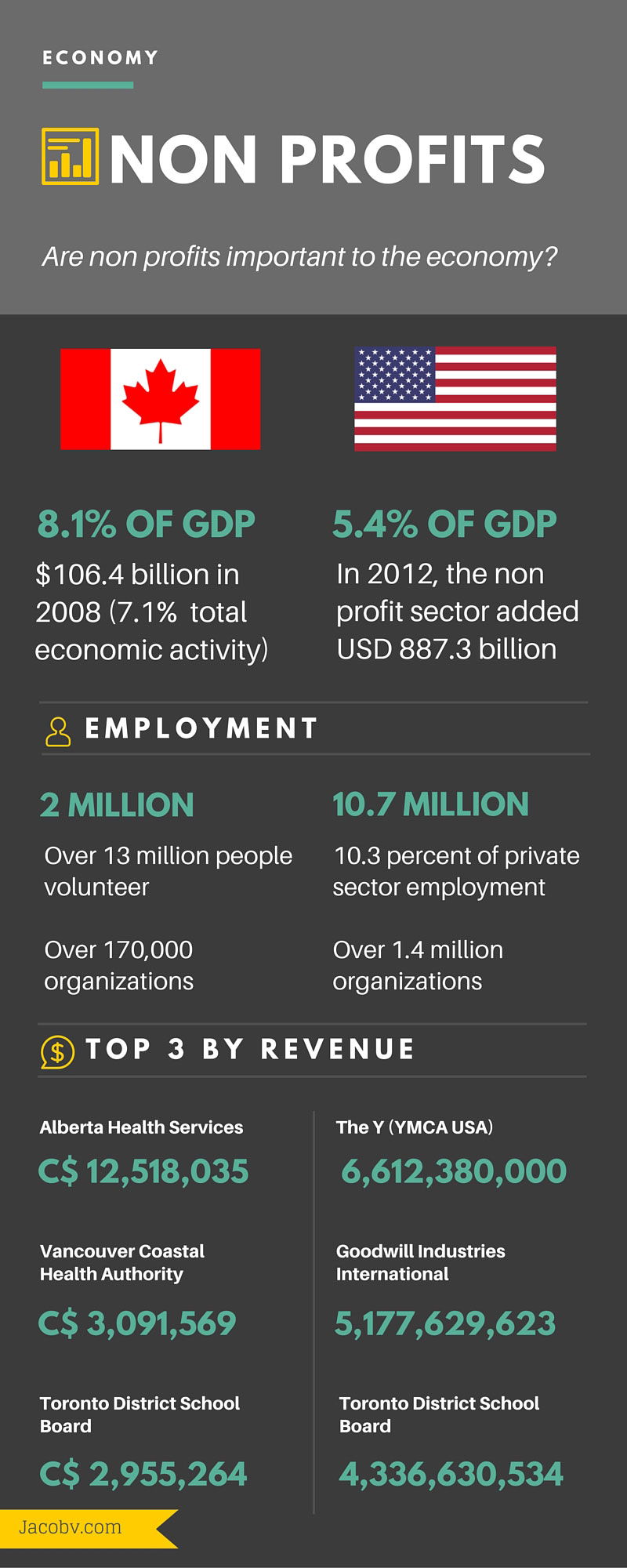There are over 170,000 non-profit organizations in Canada. These are said to account for more than 8% of the Canadian GDP. This sector employs about two million Canadians.
Similarly in the U.S., non-profits account for 5.4% of the GDP at around $887.3 billion. About 10 million people are employed by the non-profit sector.
Some of these organizations do exceptional work in marketing, fundraising, and creating awareness for their missions. The ALS Ice Bucket Challenge successfully used social media to raise $100 million in 2014.
New technologies like social media, sharing economy, crowd funding, open source, crowd sourcing etc., lower the cost of deployment and execution of marketing and fundraising activities.
At the same time the sector faces significant challenges. Disruption is underway, though not as apparent as in the ‘UBER and taxi industry’ scenario. Social activism and connectivity at scale is now possible at the individual level and without a non-profit ‘middle-man’.
It is inevitable that there will be further disruption with the current non-profit model replaced with a digital model that allows donors, funders, and members to connect directly to individual causes or communities.
This disruptive model would enable connections within the context of the individuals needs at any given point in time, on the device of their choosing.
That aside, challenges facing non-profits include
Talent shortage: Organizations now have the unprecedented ability to delve deep into data on their funders and donors. The funders, donors, and members on the other hand are increasingly looking for measurable impacts of their contributions and memberships.
Though the technology required to advance the missions of non-profits already exists, organizations struggle with the competencies required:
– To best use the technology.
– Source and integrate other technologies that are required to collect data at appropriate touchpoints like social, email etc.
– Dissect and understand the data and know what to measure.
– Develop actionable marketing, awareness, fund-raising, and membership value-adds based on the data.
These competencies are in demand in other businesses and non-profits will find it increasingly difficult to attract and retain the kind of talent needed.
Leadership: Incumbent boards and leadership themselves are struggling to keep up with the tsunami of technological advances. Many of these leaders are unable to go through the needed overhaul of their organizations in order to deliver on accountability, sustainability, and value by using cost-effective new technologies.
The leadership has to think beyond the buzz items of the day like ‘Social Media’ or ‘SEO’ and learn to dig deeper into understanding and harnessing the big data coming from various touch-points.
Unfortunately, at the very time members, donors, and funders demand more value from the sector, many of these leaders often fall back to the process driven comfort zones to which they have grown accustomed to.
An entrepreneurial approach towards strategic technology implementation is important to have.
Nevertheless there are various initiatives underway like the new four-year undergraduate degree program in non-profit management that seek to resolve some of the leadership related challenges facing non-profits. A greater focus on technology skill-sets could perhaps benefit such programs.
There are also some excellent initiatives that seek to enhance not-for-profit sector leadership in cutting edge internet issues.
Many of the interests and values of today’s millennial are aligned with that of the non-profit sector. The sector should emphasize on these common values to attract and retain needed talent.
Progressive organizations in the non-profit sector need to continue to create value for their services with digital innovation that can pre-empt the inevitable disruption and erosion of older business models. Their survival depends on the ability to source leadership and talent that can create and grow such value.
Is your non-profit organization equipped to add value to your services now and well into the future? Do you want to learn how your unique not-for-profit organization can benefit from a digital transformation? Find out how I can help.
Share this Image On Your Site
Sources:
ttp://www.bls.gov/opub/ted/2014/ted_20141021.htm
http://www.thenonprofitpartnership.org/files/ned_national_2012.pdf
http://www.thenonprofittimes.com/wp-content/uploads/2014/10/11-1-14_Top100.pdf
http://sectorsource.ca/research-and-impact/sector-impact

